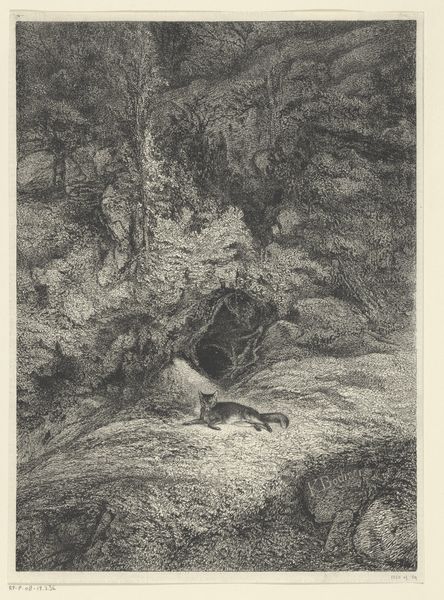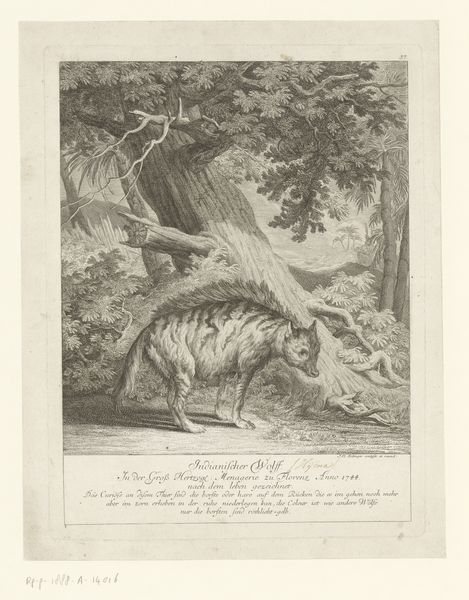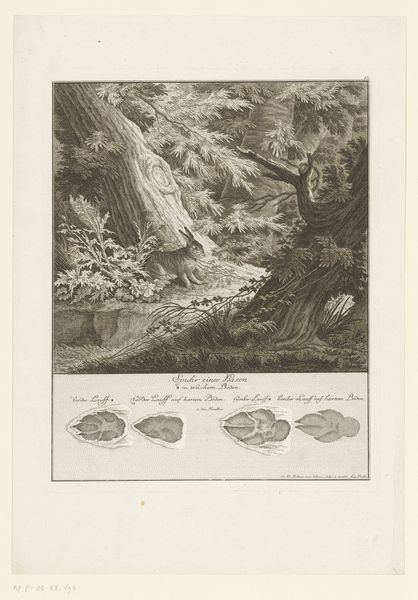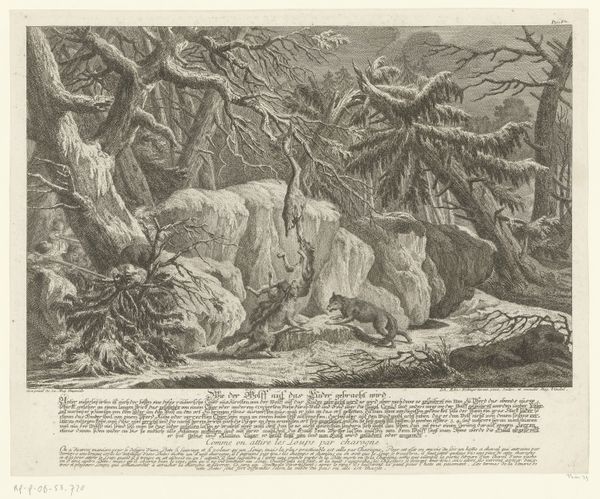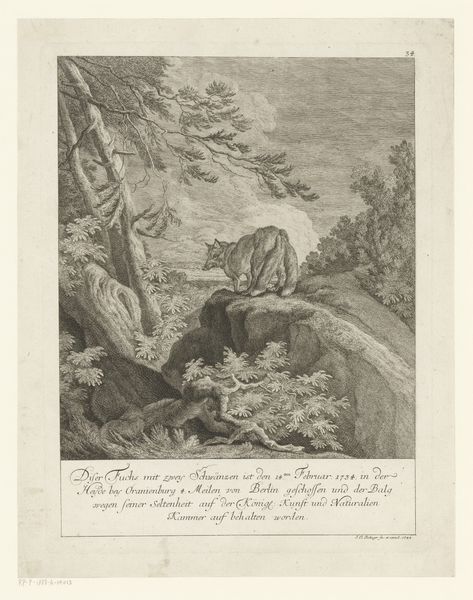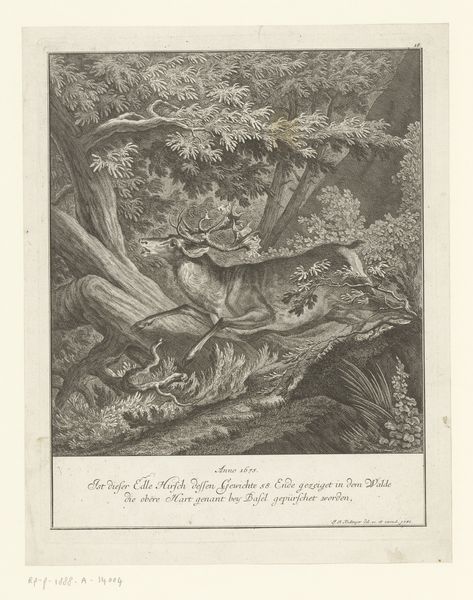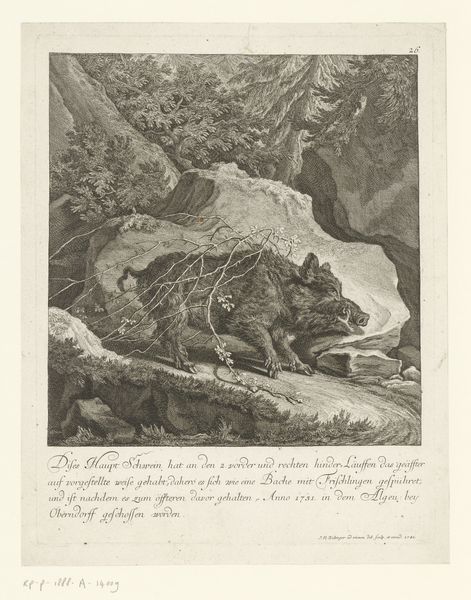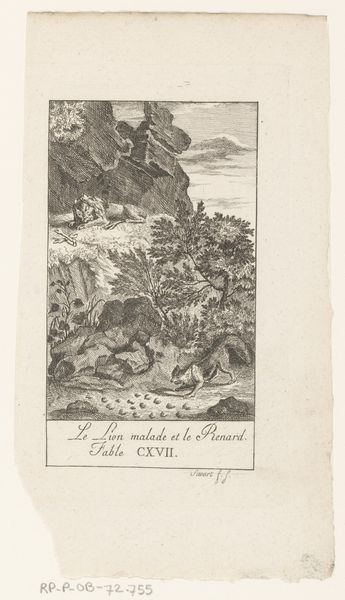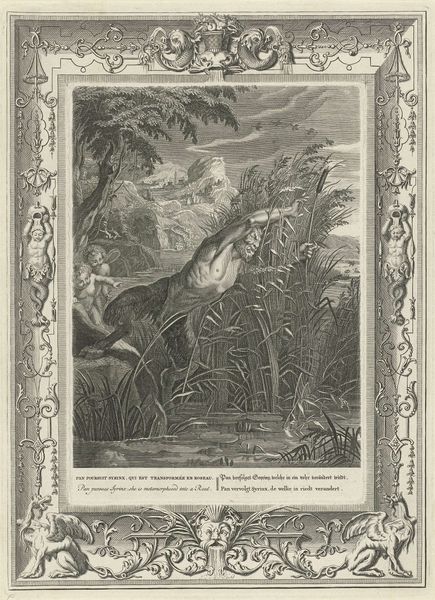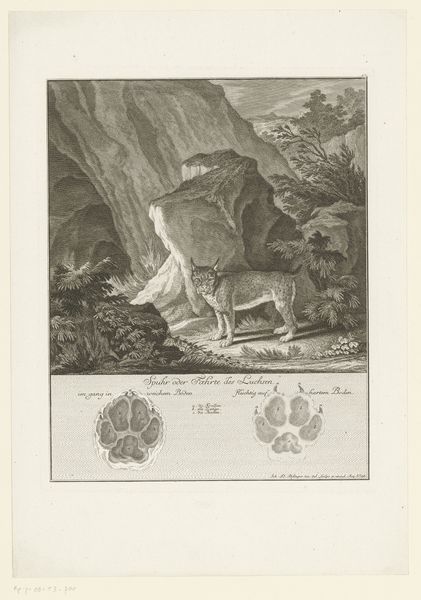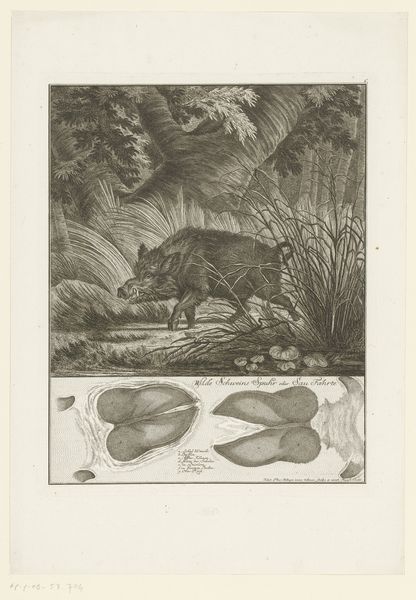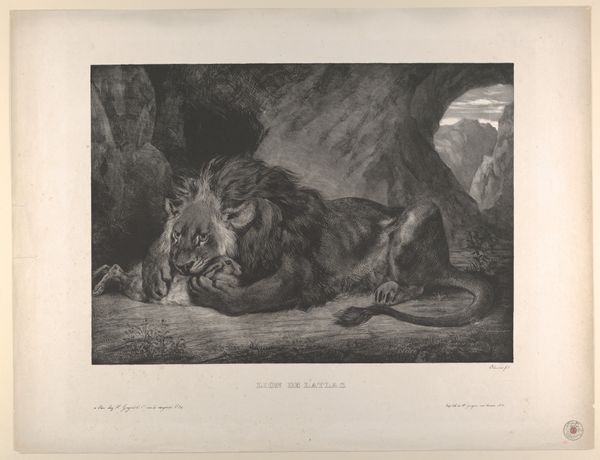
print, graphite, engraving
# print
#
old engraving style
#
landscape
#
graphite
#
engraving
#
realism
Dimensions: height 375 mm, width 294 mm
Copyright: Rijks Museum: Open Domain
This print of a ‘Bijzonder wild zwijn’, or ‘Special Wild Boar,’ was created by Johann Elias Ridinger, an artist working in 18th-century Germany. At this time, depictions of animals were less about zoological accuracy and more about conveying symbolic meanings tied to social hierarchies and the natural order. Here, the boar, set against a dramatic landscape, embodies a complex set of ideas. The print commemorates the capture of a large boar by a nobleman, Herr Wilhelm von Maxelheim, framing the animal as both a trophy and a symbol of the man's power and dominion over nature. Hunting, of course, was a privilege of the aristocracy, a visual language of class and control. But there's also an inherent tension. The boar is rendered with a certain vitality. It is a creature of instinct and wildness, resisting complete domestication. Ridinger’s composition subtly acknowledges the animal’s inherent dignity, complicating any straightforward reading of human dominance. This tension reminds us that our relationship with the natural world is often one of negotiation, reflecting the cultural values we project onto it.
Comments
No comments
Be the first to comment and join the conversation on the ultimate creative platform.

